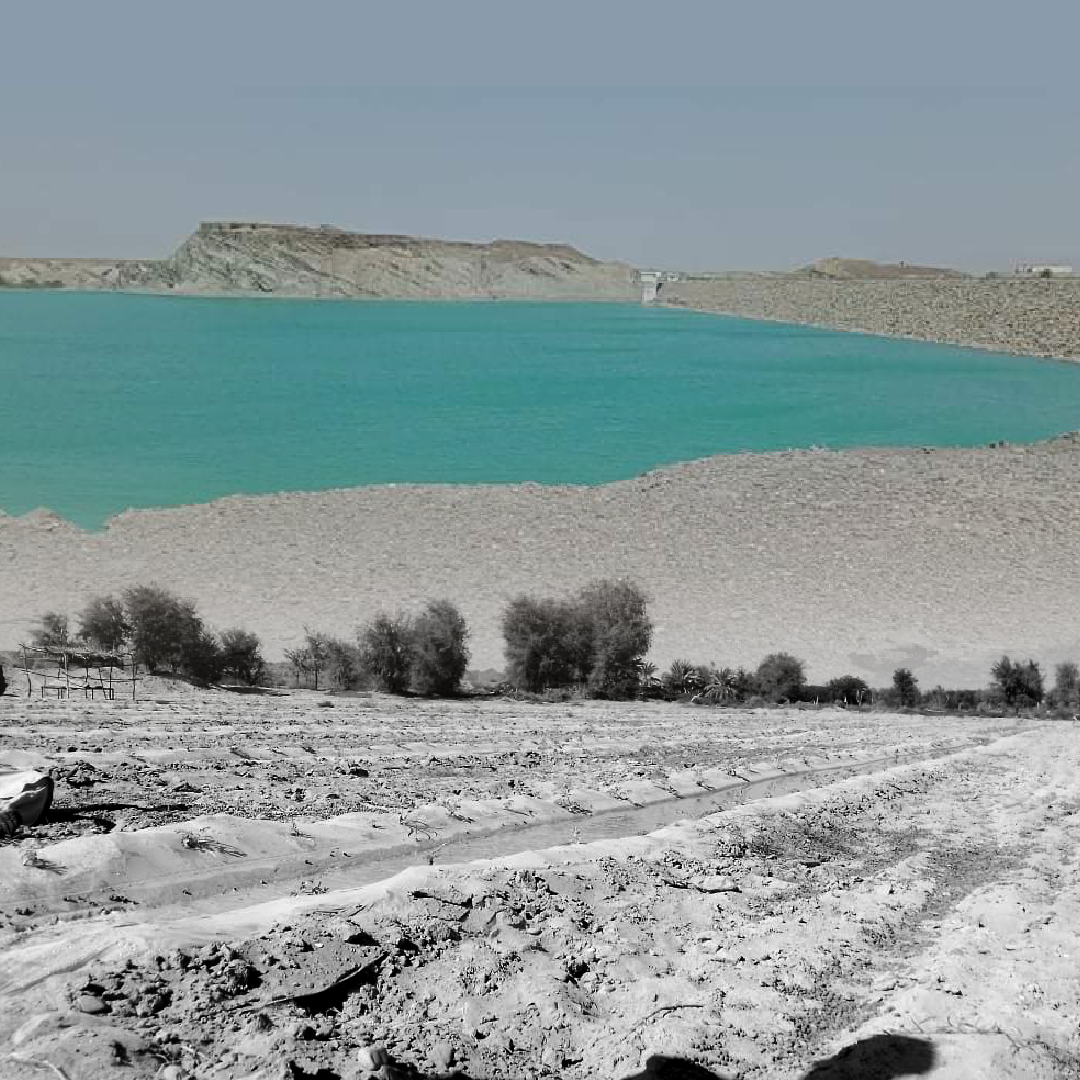Lal Bakhsh owns 50 acres of agricultural land in the Shadi Kaur area of Pasni. However, he can cultivate only 10 acres of it whereas the remaining 40 acres of land is barren.
He says agricultural machinery and millions of rupees are required to make the land cultivable, which is not affordable for him. Even if he manages to make it cultivable after selling something, how will he get the capital for cultivation?
“Tractors charge Rs2,000 an hour for levelling the land. It will cost me around Rs50,000 for levelling five acres. Furthermore, by adding fertilizer, seed, pesticides and other expenses, the crop will cost Rs300,000 to Rs400,000.”
He adds that it becomes difficult to get ration (grocery) on loan after damage to the crop. The government does not help and NGOs (non-government organisations) consider ‘land owners’ as rich.
“I hardly cultivate about 10p acres where my wife and children also work but we live from hand to mouth.”
Juma Essa who has cultivated wheat is also a resident of Shadi Kaur, an area of Pasni tehsil. He says he had grown wheat at three acres last year and it cost him Rs200,000, including expenses on seeds, fertilizer and spray. However, he did not get even 20 to 25 maunds of wheat from it.
“I have not even been able to pay the cost of borrowed fertilizer. Shadi Kaur farmers are miserable despite the availability of abundant water. The lack of resources has now forced me to sell the land and find a better job,” Essa laments.
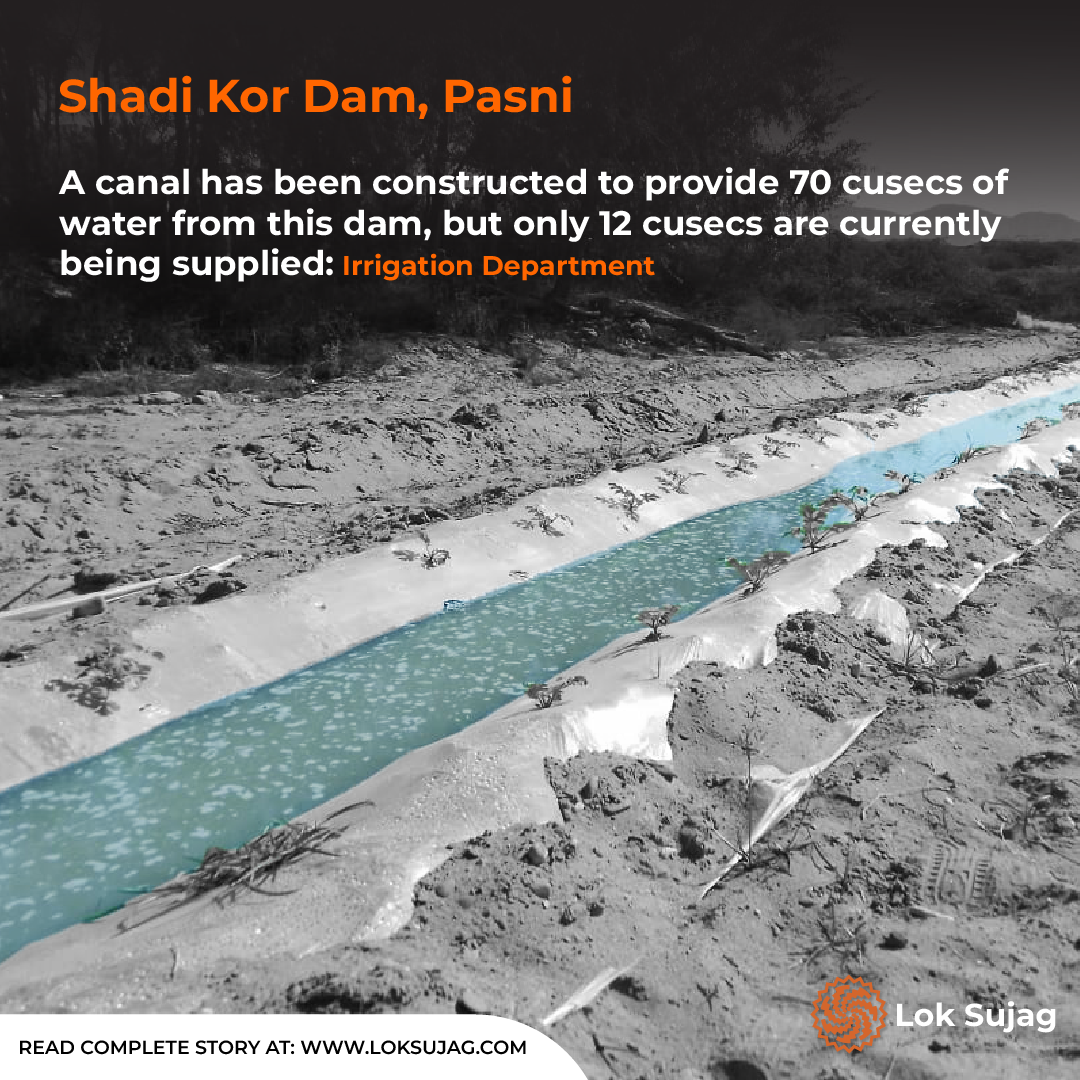
In Pasni, a tehsil of District Gwadar, river Shadi Kaur flows from the mountains into the sea by passing through a smooth sloping area of about 45km. There is fertile agricultural land and plains on both sides of the river.
According to the 2023 census, the total population of this tehsil is 61,347, out of which 26,790 people reside in the rural areas. However, according to an estimate, almost 5,000 people of the rural population reside in the Shadi Kaur area and 80pc of this population depends on farming for their bread and butter.
Agriculture Officer of Pasni and in-charge of Coconut Farm Shadi Kaur, Wasim Noor says this tehsil has about 10,000 acres of agricultural area where several vegetables, watermelon, melon, plum, date palm, fodder, cotton, wheat and lentils etc are cultivated.
According to him, cauliflower, carrot, spinach, cabbage, potato, radish, turnip, okra, chilli, tomato, gourd, cucumber, peas, and onion are cultivated abundantly in Shadi Kaur. These meet 30 to 40 percent of the vegetable requirement of districts Kech and Gwadar while Pasni also receives vegetables from Shadi Kaur.
Restoration of Shadi Kaur Dam
According to the technical information provider ‘Geo Engineer’, a dam was constructed on the Shadi Kaur River, about 50km (31 miles) north of Pasni City in 2003. It cost Rs45m and was built for the irrigation of the area. This dam collapsed due to heavy rains on Feb 10, 2005.
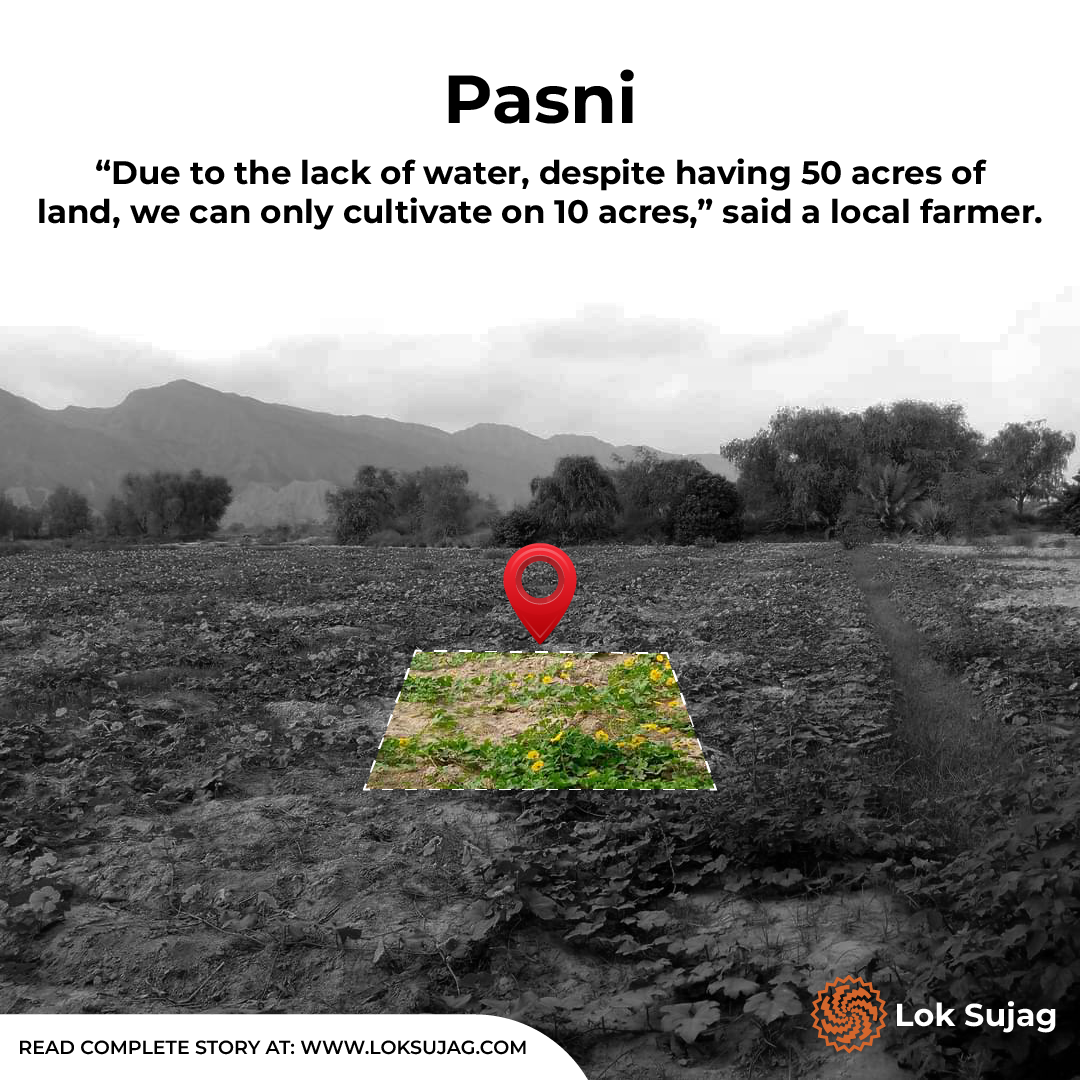
According to the United Nations Office for the Coordination of Humanitarian Affairs (OCHA), 82 people died due to the collapse of the Shadi Kaur Dam in February 2005, while around 5,500 people were seriously affected by the floods.
The restoration of Shadi Kaur Dam was planned in 2008. The project was approved by the Central Development Working Party in 2009 but it could be executed till 2015 due to the amendment of PC-1 (due to China-Pakistan Economic Corridor). The new PC-1 also included clean water supply schemes to Pasni, surrounding communities and Gwadar.
First phase of its construction was completed at the cost of Rs3.8bn through the Federal Public Sector Development Programme. However, according to the estimate, the total cost of this project was Rs7.9bn.
The National Assembly was informed regarding the completion of Shadi Kaur Dam on Oct 31, 2016, having a water storage capacity of 37,000 acre-feet, capable of providing 70.28 cusecs of water to the 7,595 acres (3,075 hectares) of Shadi Kaur.
The Dam makes a little difference
EXEN Irrigation Bibgar Babu says that a canal capable of supplying 70 cusecs of water originates from this dam but supplies only 12 cusecs. Out of it, agricultural land receives eight cusecs whereas Pasni city gets four cusecs through water tankers. He informs that 10 water channels spring from the main outlet (canal) to bring water to the fields.
The water stored in Shadi Kaur Dam is enough to irrigate more than the command area (7,595 acres). However, there are only 700 acres of cultivated land whereas the rest of the land is barren.
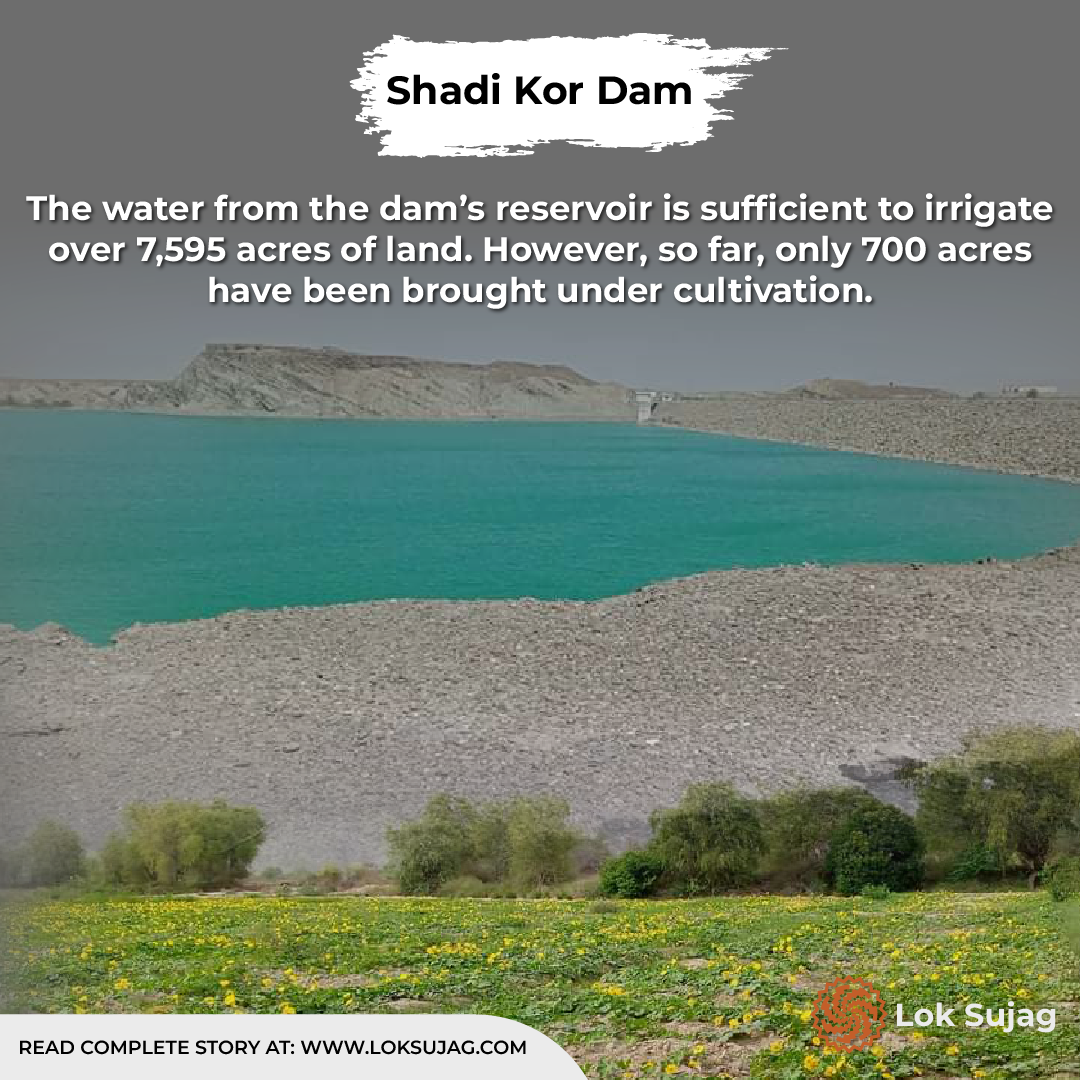
Babu says water channels are not constructed in barren land and the farmers will have to work hard to fetch water there.
According to him, as soon as the rainy season begins, the dam fills up so we have to release water into the river, which is wasted.
When the former prime minister Nawaz Sharif inaugurated this dam in 2016, the local people expected an abundance of water, which will provide resources to the farmers for cultivation. Ultimately, it will improve the economic development of the area.
Tahir Baloch is a local landowner who started farming after graduation. He says the irrigation department has provided water channels to some fields and orchards after the construction of Shadi Kaur Dam. This has increased the cultivation of vegetables but traditional crops do not meet the cost of small farmers.
According to him, the irrigation department should have reached all cultivable lands, introduced new seeds, fertilisers, agricultural machinery, pesticides, herbicides and trained the farmers.
Farmers should have given subsidised agricultural machinery to settle the land as well as resources from the agricultural banks.
But it did not happen.
Agriculture department excuses
The agriculture department admits that the farmers can’t afford making the land cultivable but no government agency takes a step forward to increase the farmer’s capacity and resources.
Also Read
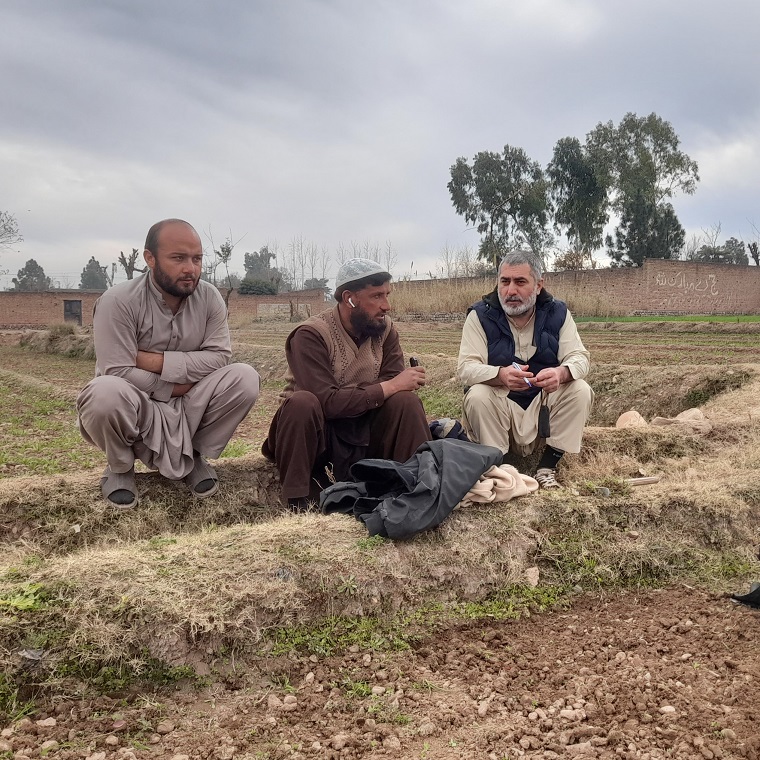
Khyber's agricultural crisis: Barren lands, disputed canals, and awaited dam solution
Karim Bakhsh, the manager at the Pasni branch of the Agricultural Development Bank, says settlement is still going on in these areas and will not allow anyone to get an agricultural loan until the finance department receives the record. There will be a new rate after the settlement.
“We used to provide loans for rain-fed crops at the rate of Rs6,000 per acre but now the bank has stopped it as some people did not return the loan.”
Agriculture Officer Waseem Noor says his department had provided the farmers with seed last year and will also try to provide cotton and watermelon seeds and pesticides with the help of NGOs this year.
“We are also working on another project to help the farmers and we are trying to provide training and information to farmers through seminars.”
Rahim Bakhsh has been farming with his family for 30 years. He says he had spent Rs300,00 last year and sowed watermelons but the rain washed away the crops near the time of harvesting.
“We hand over the crop to the same merchant (Seth) from whom we borrow seeds, fertilizers, medicines etc. How can we pay the loan after the washing away of crops worth millions by rain or storm?” he laments.
Published on 30 Mar 2024
